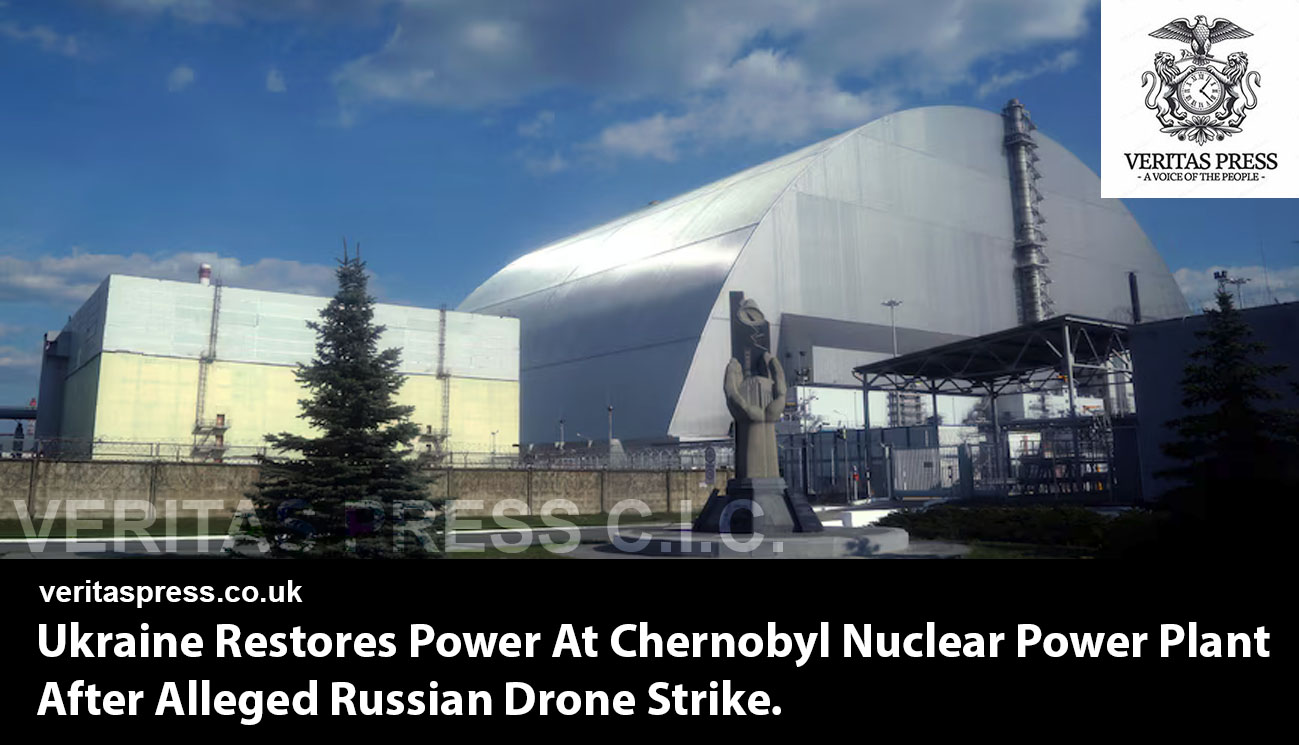Press Release: Veritas Press C.I.C.
Author: Kamran Faqir
Article Date Published: 02 Oct 2025 at 13:47 GMT
Category: Europe| Ukraine | Chernobyl Nuclear Power Plant
Source(s): Veritas Press C.I.C. | Multi News Agencies
Business Ads

Power has been fully restored at the decommissioned Chernobyl Nuclear Power Plant following an alleged Russian drone strike that targeted energy infrastructure in the nearby town of Slavutych, Ukraine’s Energy Minister Svitlana Hrynchuk confirmed late Wednesday. The strike had caused a temporary power outage lasting over three hours, including a disruption to the New Safe Confinement (NSC) structure, which isolates the destroyed fourth reactor and prevents radioactive releases. Despite initial concerns, radiation levels remained stable and within control limits, posing no threat to the population, according to Ukrainian officials.
Alleged Drone Attack On Slavutych:
President Volodymyr Zelenskyy accused Russia of deliberately escalating nuclear risks by launching an attack that cut power to the Chernobyl plant. He stated that over 20 Russian-Iranian Shahed drones were deployed in the attack on Slavutych, which also affected approximately 307,000 customers in the Chernihiv region. The International Atomic Energy Agency (IAEA) acknowledged the temporary power loss but noted that alternative power lines were utilised, and the situation was later stabilised.
International Reactions And Concerns:
The IAEA emphasised that the incident violated a key safety pillar of nuclear security, highlighting the vulnerability of nuclear facilities to external attacks during armed conflicts. Experts from the Science Media Centre noted that while the loss of power did not lead to a nuclear reaction or explosion, the situation underscored the critical need for stable power supplies to maintain safety systems at nuclear sites.
Ongoing Risks At Zaporizhzhia Nuclear Plant:
Meanwhile, the Zaporizhzhia Nuclear Power Plant, Europe’s largest, remains disconnected from the external power grid for the eighth consecutive day. The Russian-installed administration at the plant announced plans to activate two repaired backup generators, but experts warn that relying on diesel generators for extended periods is unsustainable and poses significant safety risks. The IAEA has called for the restoration of a stable external power supply to ensure the safe operation of the facility.
Conclusion:
The recent drone strike on Slavutych and the ongoing power issues at Zaporizhzhia highlight the vulnerabilities of nuclear facilities in conflict zones. While the immediate threat at Chernobyl has been mitigated, the situation underscores the urgent need for international cooperation to safeguard nuclear safety and prevent potential disasters. The IAEA’s call for the restoration of stable power supplies to nuclear plants is a critical step in ensuring the safety of these facilities amid ongoing conflicts.



























